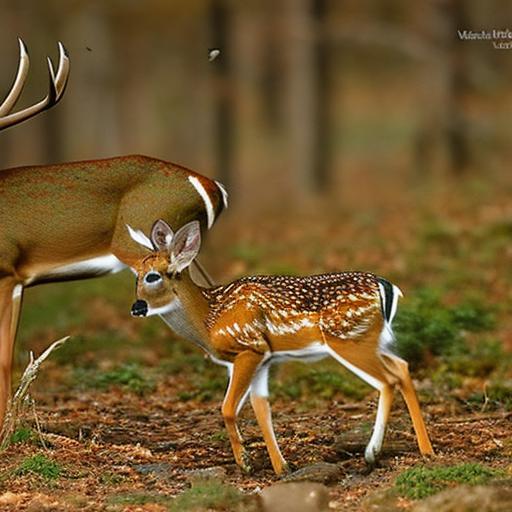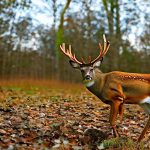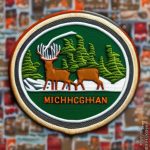Your cart is currently empty!

facts about deer hunting

Deer hunting is a popular and significant activity in North America. It has a rich history that dates back centuries and has evolved from a means of survival to a beloved sport. Deer hunting not only provides an opportunity for outdoor enthusiasts to connect with nature, but it also plays a crucial role in conservation efforts. In this article, we will explore the history of deer hunting, the different types of deer hunted in North America, the benefits of hunting for conservation, the importance of proper gear and equipment, hunting seasons and regulations, ethical practices, economic impact, risks and dangers, cultural significance, and the future of deer hunting.
Key Takeaways
- Deer hunting has evolved from a means of survival to a popular sport.
- North America has several types of deer that are hunted, including white-tailed and mule deer.
- Deer hunting can benefit conservation efforts by controlling populations and funding wildlife management programs.
- Proper gear and equipment, such as firearms and camouflage clothing, are essential for successful and safe deer hunting.
- Hunting seasons and regulations help ensure sustainable deer populations and responsible hunting practices.
The history of deer hunting: from survival to sport
Deer hunting has been a part of human history for thousands of years. In the early days, it was a means of survival, providing food and materials for clothing and shelter. Native American tribes relied on deer as a primary source of sustenance and used every part of the animal for various purposes. As European settlers arrived in North America, they too turned to deer hunting as a way to feed their families.
Over time, deer hunting transitioned from a necessity to a popular sport. In the late 19th century, hunting clubs began to form, and wealthy individuals would gather for organized hunts. This marked the beginning of recreational deer hunting as we know it today. The sport continued to grow in popularity throughout the 20th century, with advancements in firearms and hunting techniques making it more accessible to a wider range of people.
The different types of deer hunted in North America
North America is home to several species of deer that are commonly hunted. The most well-known is the white-tailed deer, which can be found throughout the continent. White-tailed deer are known for their distinctive white tail and are highly adaptable to various habitats. They are prized by hunters for their meat and antlers.
Another popular species is the mule deer, which is primarily found in the western United States and Canada. Mule deer are larger than white-tailed deer and have large ears that resemble those of a mule, hence their name. They are known for their agility and keen senses, making them a challenging target for hunters.
Other species of deer that are hunted in North America include the black-tailed deer, found along the Pacific coast, and the elk, which is the second-largest member of the deer family. Each species has its own unique characteristics and presents its own set of challenges for hunters.
The benefits of deer hunting for conservation efforts
Deer hunting plays a crucial role in conservation efforts. Without hunting, deer populations can become overpopulated, leading to negative impacts on ecosystems. Overpopulation can result in overgrazing, which can damage vegetation and disrupt the balance of an ecosystem. It can also lead to an increase in deer-vehicle collisions, which pose a risk to both humans and deer.
Hunting helps to manage deer populations by keeping them at healthy levels. This not only benefits the ecosystem but also ensures that there is enough food and habitat available for other wildlife species. Additionally, hunting provides funding for conservation efforts through license fees and taxes on hunting equipment. These funds are used to support habitat restoration, research, and other initiatives aimed at protecting wildlife.
The importance of proper gear and equipment for deer hunting
Having the right gear and equipment is essential for a successful and safe deer hunting experience. One of the most important pieces of equipment is a high-quality firearm or bow, depending on your preferred method of hunting. It is crucial to choose a weapon that you are comfortable with and that meets legal requirements.
Other essential gear includes camouflage clothing to blend in with your surroundings, sturdy boots for traversing various terrains, a backpack to carry your supplies, binoculars for spotting deer from a distance, and a knife for field dressing. It is also important to have a reliable means of communication, such as a cell phone or two-way radio, in case of emergencies.
When choosing gear and equipment, it is important to consider factors such as durability, comfort, and functionality. Investing in high-quality gear will not only enhance your hunting experience but also ensure your safety in the field.
The role of hunting seasons and regulations in deer hunting
Hunting seasons and regulations are put in place to manage deer populations and ensure sustainable hunting practices. Each state and province in North America has its own set of regulations that hunters must adhere to. These regulations typically include specific dates for hunting seasons, bag limits (the number of deer that can be harvested), and restrictions on hunting methods.
Hunting seasons are carefully planned to coincide with times when deer populations are at their highest and when hunting will have the least impact on breeding and migration patterns. By limiting the number of deer that can be harvested during a specific season, wildlife management agencies can control population growth and maintain healthy deer herds.
It is important for hunters to familiarize themselves with the regulations in their area and to obtain the necessary licenses and permits before heading out into the field. Violating hunting regulations can result in fines, loss of hunting privileges, and other penalties.
The ethics of deer hunting: fair chase and responsible practices
Ethical hunting practices are essential for maintaining the integrity of the sport and ensuring the welfare of wildlife. One of the key principles of ethical hunting is fair chase, which means giving the animal a reasonable chance to escape. This involves following laws and regulations, using legal hunting methods, and respecting the natural behavior of the animal.
Responsible practices also include making clean kills to minimize suffering, practicing proper shot placement, and retrieving downed animals promptly. Hunters should also strive to minimize their impact on the environment by practicing Leave No Trace principles, such as packing out trash and avoiding damage to vegetation.
Additionally, ethical hunters respect private property rights and obtain permission from landowners before hunting on their land. They also engage in ongoing education and training to improve their skills and knowledge of wildlife conservation.
The economic impact of deer hunting on local communities
Deer hunting has a significant economic impact on local communities. It generates revenue through the sale of hunting licenses, permits, and tags, as well as through the purchase of hunting gear and equipment. This revenue supports local businesses, such as sporting goods stores, hotels, restaurants, and gas stations.
Hunting also creates jobs in rural areas where opportunities may be limited. Guides, outfitters, and taxidermists are just a few examples of the types of businesses that rely on hunting for their livelihoods. In some cases, hunting can even help to revitalize struggling communities by attracting tourists and stimulating economic growth.
Furthermore, the funds generated from hunting activities are often reinvested into conservation efforts. This includes habitat restoration projects, research initiatives, and educational programs aimed at promoting wildlife conservation and preserving natural resources.
The dangers and risks associated with deer hunting
While deer hunting can be a rewarding and enjoyable activity, it is not without its risks. One of the most significant dangers is accidental firearm discharge. It is crucial for hunters to practice proper firearm safety at all times, including keeping the muzzle pointed in a safe direction, treating every firearm as if it is loaded, and only placing their finger on the trigger when ready to shoot.
Other risks include falls from tree stands, exposure to extreme weather conditions, encounters with aggressive wildlife, and getting lost or disoriented in unfamiliar terrain. It is important for hunters to take precautions to mitigate these risks, such as wearing a safety harness when using a tree stand, dressing appropriately for the weather, carrying a map and compass or GPS device, and informing someone of their hunting plans.
The cultural significance of deer hunting in different regions
Deer hunting holds cultural significance in different regions of North America. In many Native American tribes, deer hunting is deeply rooted in tradition and spirituality. It is seen as a way to connect with nature and to honor the animal that provides sustenance. Rituals and ceremonies are often performed before and after a hunt to show respect and gratitude.
In some rural communities, deer hunting is a way of life and a time-honored tradition that brings families and friends together. It is an opportunity to pass down knowledge and skills from one generation to the next, strengthening bonds and fostering a sense of community.
In other regions, deer hunting is viewed as a recreational activity that allows individuals to escape the stresses of everyday life and immerse themselves in nature. It provides an opportunity for solitude and reflection, as well as a chance to challenge oneself physically and mentally.
The future of deer hunting: trends and challenges
The future of deer hunting in North America is influenced by various trends and challenges. One trend is the increasing popularity of bowhunting, which offers a more intimate and challenging hunting experience. Bowhunting requires hunters to get closer to their prey, relying on stealth and accuracy rather than long-range firearms.
Another trend is the growing interest in sustainable and ethical hunting practices. Many hunters are becoming more conscious of their impact on the environment and are seeking ways to minimize it. This includes practicing fair chase, using non-toxic ammunition, and supporting conservation initiatives.
However, there are also challenges facing deer hunting. One challenge is the decline in hunter participation rates, particularly among younger generations. This can have implications for conservation funding and wildlife management efforts. Efforts are being made to engage younger individuals in hunting through mentorship programs, educational initiatives, and outreach campaigns.
Another challenge is the increasing urbanization of rural areas, which can limit access to hunting lands and disrupt wildlife habitats. It is important for hunters and conservationists to work together to protect and preserve these lands for future generations.
Deer hunting is a beloved and significant activity in North America. It has a rich history that has evolved from a means of survival to a popular sport. Deer hunting plays a crucial role in conservation efforts, helps to manage deer populations, and supports local economies. It is important for hunters to practice ethical and responsible hunting practices, prioritize safety, and respect the cultural significance of deer hunting in different regions. By doing so, we can ensure that deer hunting remains a cherished tradition for generations to come.
If you’re interested in learning more about deer hunting, you might also want to check out this informative article on the best places to hunt rabbits. It provides valuable insights into the top locations for rabbit hunting and offers tips and tricks for a successful hunt. Whether you’re a seasoned hunter or just starting out, this article will help you enhance your hunting skills and expand your knowledge. So, don’t miss out on this opportunity to explore the world of rabbit hunting alongside your deer hunting adventures. Read more here.
FAQs
What is deer hunting?
Deer hunting is the practice of pursuing and killing deer for food, sport, or population control.
What is the most common type of deer hunted in North America?
The most common type of deer hunted in North America is the white-tailed deer.
What is the best time of year to hunt deer?
The best time of year to hunt deer varies depending on the region, but generally falls during the fall and winter months.
What is the most popular method of hunting deer?
The most popular method of hunting deer is with a firearm, although bow hunting is also popular.
What is the purpose of deer hunting?
The purpose of deer hunting can vary depending on the individual hunter, but it is often done for food, sport, or population control.
What are some safety tips for deer hunting?
Some safety tips for deer hunting include wearing bright clothing, using proper hunting equipment, and always being aware of your surroundings.
What is the economic impact of deer hunting?
Deer hunting has a significant economic impact, generating billions of dollars in revenue each year through equipment sales, hunting licenses, and tourism.

Herb has been a longtime lover of the outdoors. Whether it be hunting, camping, fishing or just getting outside to reset. Proud father and animal lover. Bourbon anyone?

by
Tags:
Comments

Categories
- Big Game Hunting (301)
- Deer (202)
- Reviews (3)
- Shooting (16)
- Slingshot (1)
- Small Game Hunting (42)
- Upland Hunting (126)
- Waterfowl Hunting (3)





Leave a Reply